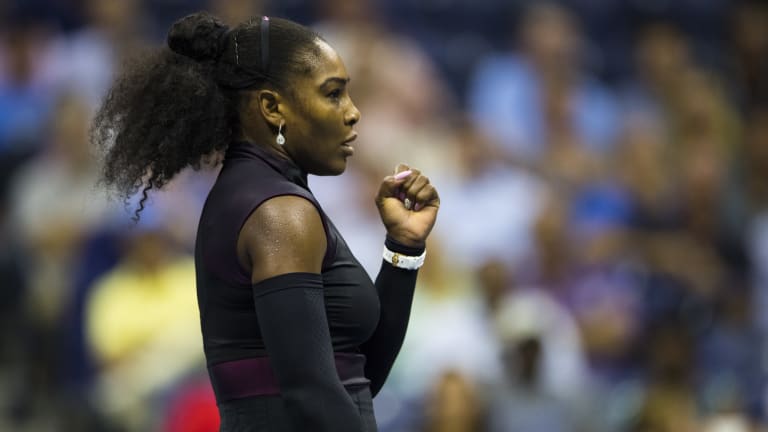NEW YORK—“I knew if I wanted to win this,” Serena Williams said after her 6-2, 4-6, 6-3 quarterfinal victory over Simona Halep on Wednesday, “I really had to step it up in the third set.”
Unlike most of us, when Serena thinks something on a tennis court, she can usually be counted on to make it happen. By the end of the second set, Halep had built up a head of steam; serving at 5-4, she survived an old-fashioned onslaught from Serena and saved four break points to close out the set. But Serena wasted no time stopping Halep’s momentum cold at the start of the third.
At 1-2, with Halep serving at break point, Serena hit a strong forehand return that won her the point and the game. She had been on the verge of breaking Halep in the second set, but hadn’t quite gotten over the hump. Now she had, and a match that had been spectacularly competitive 10 minutes earlier, that had fans gasping at the speed and quality of the rallies, suddenly felt like it was all over.
When Serena said she had to “step it up” in the third set, though, did she actually mean that she needed to take it down a notch? She had broken out of the gates hard in the first set; by the six-minute mark, she had hit five aces and seven winners and was up 3-0. But soon a shank or two began to seep through the cracks, and by the second set that trickle had turned into a flood. Halep finally got her foot in the door when she held serve at 0-1 in the second set, after saving seven break points. But Serena did her part to open that door in the first place; she lost five of those break points on backhand errors.

